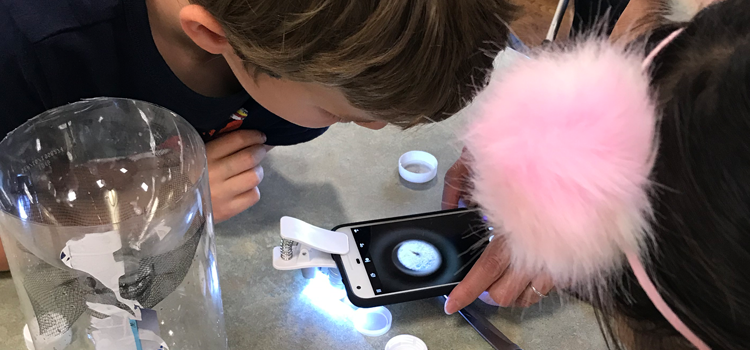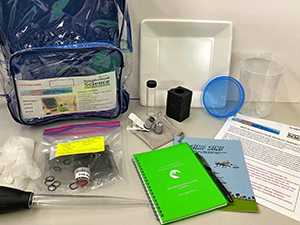
Why Do Scientists Study Mosquito Habitats?
Invasive mosquito species are spreading rapidly across Southern California with the potential to transmit viruses that cause serious diseases such as West Nile virus, dengue, and Zika. Surveillance and breeding site mitigation are key to preventing mosquito-borne disease outbreaks.

What's in the Kit?
- Mosquito trap supplies
- 1 turkey baster
- 1 plastic container with lid
- 2 White paper plates
- 1 clip-on cellphone magnifier
- 1 plastic tweezer
- 1 glass vial of rubbing alcohol
- 1 pair of gloves
- 1 sharpie
- 1 eraser
- 1 observation journal
- 1 mini GPS location finder
- 1 USB charging cord
- 1 book: Zika Zine
- 1 instructions packet
- Safety rules
Relevant Sustainable Development Goals (SDGs)
How to Help Scientists Collect Data?
Step 1
Use the Mini GPS location finder in the kit for location coordinates and elevation information. Press and hold the middle button to turn on the GPS and give it 8-15 minutes to connect to a satellite. Once it is connected, the screen will display a signal icon with bars and a blinking black bullet. Press the top button three times to see coordinates and two more times to see the elevation information measured in meters. Press and hold the middle button to turn the GPS off.
Step 2
Record your location coordinates using the datasheet included in the instructions packet.
Step 3
Use the Mosquito Habitat Mapper Step-By-Step Guide included in the instructions packet to help you identify the mosquito habitats around your neighborhood. If you have a camera, photograph the mosquito breeding habitat you observed.
Step 4
Record your observations by answering the questions on the datasheet.
Step 5
Watch the GLOBE’s Getting Started: Sample Collection video tutorial on how to collect and identify mosquito larvae samples using the small container with lid, turkey baster, and paper plates in the kit.
Step 6 (Optional)
To conduct observations using your own mosquito trap, use the supplies in the kit and follow the instructions to build and set up a mosquito trap. Now make your observations of any larvae or any eggs in your trap and continue to Step 7. Make sure to observe your trap at least once a week.
Watch the video tutorial on how to make a mosquito trap.
Step 7
If you do find mosquito larvae in your trap or at the observation site, follow the instructions in the “Sample Collection” video tutorial and use the Identification Key on the backside of the Mosquito Habitat Mapper Step-by-Step Guide to identify the mosquito species. Record your observations on the datasheet.
Step 8
When you are done with your observation, be sure to eliminate the mosquito breeding habitat by gently shaking your trap to drown the adult mosquitoes and dumping out any still water in the container or by removing any stagnant water from the observation site when possible.
Step 9
When you have access to an Internet/Wi-Fi-connected computer/laptop, go to the Observation Anonymous page and select GLOBE Observer: Mosquito Habitat Mapper to access the webform. Complete all fields on the form and click Submit.
Step 10 (Recommomended)
When you have access to an Internet/Wi-Fi-connected computer/laptop, check out the GLOBE Mosquito Habitat Mapper Protocol page for tutorials and additional resources.
Step 11
Complete our survey and return the kit to the loaning library so someone else can contribute.

